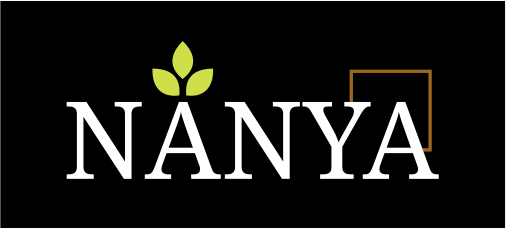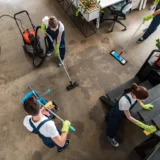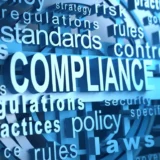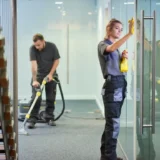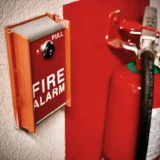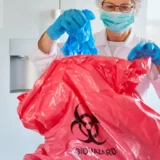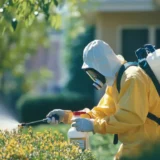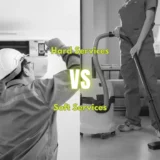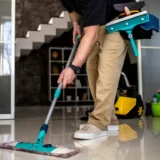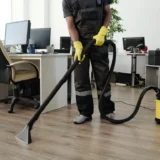Every minute of every day, life-and-death decisions happen within healthcare facilities. But here’s what many people don’t realize: some of the most critical battles against disease aren’t fought in operating rooms—they’re won or lost in the work of housekeeping services.
Picture this: A patient enters a hospital for routine surgery, trusting the environment is safe and sterile. Yet, if housekeeping protocols aren’t rigorously followed, that patient could leave with a life-threatening infection they never had before. This isn’t fear-mongering—it’s reality that healthcare facilities face daily.
Housekeeping services in healthcare represent far more than traditional cleaning. They form the invisible shield between patients, doctors, staff and countless pathogens that threaten medical environments. In facilities where vulnerable populations seek healing, where immunocompromised patients place complete trust, professional housekeeping services become the unsung heroes of infection prevention.
How Poor Housekeeping Puts Patients, Doctors and Staff at Risk?
Inadequate housekeeping services in hospital settings create cascading risks that transform healing places into harm sources.
i. Healthcare-Associated Infections (HAI): The Silent Epidemic Healthcare-associated infections represent one of modern medicine’s most serious threats. Seven out of every 100 patients in acute-care hospitals will acquire at least one HAI during their stay, and tragically, one in ten affected patients will die from infections acquired while seeking medical care.
MRSA (Methicillin-resistant Staphylococcus aureus) can lurk on improperly cleaned surfaces, attacking patients with compromised immune systems. Central Line-Associated Bloodstream Infections develop when cleaning protocols around medical equipment fail. These infections don’t discriminate and often trace back to inadequate environmental hygiene standards.
ii. The Contamination Chain Reaction: Poor housekeeping services create “contamination amplification.” When surfaces aren’t properly disinfected, pathogens spread rapidly. A single contaminated bed rail can transfer dangerous microorganisms to healthcare workers’ hands, carrying them to the next patient room, creating an invisible infection risk web throughout facilities.
iii. Staff Safety and Operational Impact: Without proper housekeeping services, healthcare workers’ occupational hazards multiply exponentially. Exposure to bloodborne pathogens, respiratory infections, and antibiotic-resistant organisms becomes probable rather than possible.
When healthcare staff become infected due to poor environmental hygiene, facilities face staffing shortages, increased workers’ compensation claims, and potential legal liability. The cost of replacing experienced healthcare professionals can be devastating both financially and for patient care continuity.
Infection Control Protocols Through Professional Housekeeping Services
Professional housekeeping services in healthcare environments operate according to rigorous infection control protocols that exceed standard commercial cleaning procedures.
i. Based Cleaning Methodologies: Modern healthcare housekeeping services rely on evidence-based protocols specifying which disinfectants work against specific pathogens, required contact times for effective sterilization, and proper cleaning activity sequences to prevent cross-contamination.
The color-coded system represents healthcare cleaning’s most important innovation. Different colored tools are assigned to different areas—red for high-risk zones, blue for general patient areas, green for kitchens, yellow for isolation rooms. This ensures microorganisms from contaminated areas never travel to cleaner zones through shared equipment.
ii. Terminal and Daily Cleaning Protocols Housekeeping services in hospital settings distinguish between routine daily cleaning and terminal cleaning procedures. Daily cleaning focuses on high-touch surfaces, waste removal, and basic hygiene maintenance. Terminal cleaning, performed during room transitions, involves comprehensive deep cleaning and disinfection of every surface, fixture, and equipment piece.
Studies show cleaning methods using appropriate disinfectants reduce healthcare-associated infection chances by 32-37% when properly implemented. Advanced housekeeping services incorporate UV-C disinfection technology, electrostatic spray applications, and cutting-edge techniques augmenting traditional manual methods.
iii. Quality Assurance and Monitoring: Professional housekeeping services implement comprehensive quality assurance programs including regular audits, ATP testing to verify surface cleanliness, and environmental cultures monitoring pathogen levels. These systems provide objective cleaning effectiveness data and identify improvement areas before problems become crises.
Role of Housekeeping in Managing Waste and Hazardous Materials
Healthcare waste management requires specialized expertise that standard housekeeping services cannot provide. Healthcare waste complexity and danger demand professional-grade handling, storage, and disposal protocols.
i. Medical Waste Classification: Healthcare facilities generate multiple waste categories requiring specific handling procedures. Infectious waste, pathological waste, sharps, pharmaceutical waste, and chemotherapy drugs all have different disposal requirements mandated by regulatory agencies.
Train staff to properly identify, segregate, and handle each waste category. Improper classification leads to environmental contamination, regulatory violations, and serious health risks.
ii. Biohazardous Material Protocols: Blood, body fluids, and potentially infectious material exposure represents healthcare housekeeping’s highest-risk aspect. Professional services implement strict cleanup procedures including immediate area isolation, proper PPE selection, appropriate disinfectant application, and safe disposal of contaminated materials.
iii. Regulatory Compliance: Healthcare waste management is heavily regulated by OSHA, EPA, DOT, and state health departments. Professional housekeeping services maintain comprehensive documentation systems tracking waste from generation through final disposal, providing necessary audit trails for regulatory compliance.
Consequences of Ignoring Housekeeping Services in Hospitals
Neglecting professional housekeeping services creates cascading problems threatening healthcare institution viability.
i. Financial Impact: Healthcare-associated infections add substantial healthcare system costs, with treatment expenses often exceeding tens of thousands of dollars per incident. When inadequate housekeeping services contribute to HAI outbreaks, facilities face direct costs of extended stays, additional treatments, legal liability, regulatory penalties, and insurance increases.
Hidden costs multiply rapidly. Staff overtime during outbreak responses, temporary unit closures, contaminated equipment replacement, and intensive deep-cleaning efforts consume resources equivalent to months or years of professional housekeeping services contracts.
ii. Regulatory and Accreditation Risks: Healthcare facilities operate under constant regulatory scrutiny. Joint Commission standards, CMS requirements, and state health department regulations include specific environmental hygiene and infection control expectations.
Facilities failing to maintain appropriate housekeeping services in healthcare risk losing accreditation, facing regulatory sanctions, and potentially losing Medicare and Medicaid reimbursement abilities—financially catastrophic for most hospitals.
iii. Long-term Reputational Damage: In our era of online reviews and instant information sharing, reputational damage from hygiene-related incidents spreads rapidly and persists for years. Recovery requires years of consistent improvement and significant investment exceeding proper housekeeping services costs from the beginning.
Conclusion
Housekeeping services in healthcare have evolved from basic cleaning to sophisticated infection prevention and patient safety management. In environments where patients entrust their lives to healthcare institutions, professional housekeeping represents an essential comprehensive care delivery component.
The evidence is overwhelming: proper housekeeping services save lives, reduce costs, protect healthcare workers, and maintain trust that healthcare institutions depend on. Conversely, inadequate housekeeping creates risks that can devastate patients, families, healthcare workers, and entire healthcare systems.
A clean and hygienic healthcare environment is critical for patient safety and staff well-being. Nanya provides expert housekeeping services in hospitals that help prevent infections and ensure smooth daily operations. Contact us today or talk to us to learn how we can make your healthcare facility safer and more efficient.
Frequently Asked Questions(FAQs)
1. What makes housekeeping services in healthcare different from regular commercial cleaning?
Housekeeping services in healthcare require specialized training in infection control, bloodborne pathogen safety, medical waste handling, and regulatory compliance. Healthcare housekeepers use hospital-grade disinfectants, follow strict color-coding systems to prevent cross-contamination, and are trained to work around medical equipment and vulnerable patients.
2. How often should different areas of a hospital be cleaned by professional housekeeping services?
Housekeeping services in hospital settings follow evidence-based cleaning schedules. Patient rooms require daily cleaning with terminal cleaning between occupants. Operating rooms need cleaning after each procedure and deep cleaning daily. High-traffic areas require multiple daily cleanings based on risk level and patient acuity.
3. What training do healthcare housekeeping staff receive for infection control?
Healthcare housekeeping services staff receive comprehensive training in infection control protocols, PPE use, bloodborne pathogen safety, chemical handling, and medical waste management. Training includes hands-on cleaning techniques, disinfectant understanding, and emergency response procedures with ongoing education.
4. How do housekeeping services help prevent healthcare-associated infections?
Housekeeping services prevent HAIs through systematic surface disinfection, proper waste management, and pathogen reservoir elimination. They follow evidence-based protocols reducing infection rates by 32-37% through appropriate disinfectants, color-coded systems, sterile environment maintenance, and regular effectiveness monitoring.
5. What are the benefits of professional housekeeping services in healthcare facilities?
Professional housekeeping services in healthcare provide substantial return on investment by reducing HAI rates by 30-60%, improving staff safety, ensuring regulatory compliance, and enhancing patient satisfaction. Prevention costs are always lower than infection outbreak consequences including extended stays, additional treatments, and potential liability.
